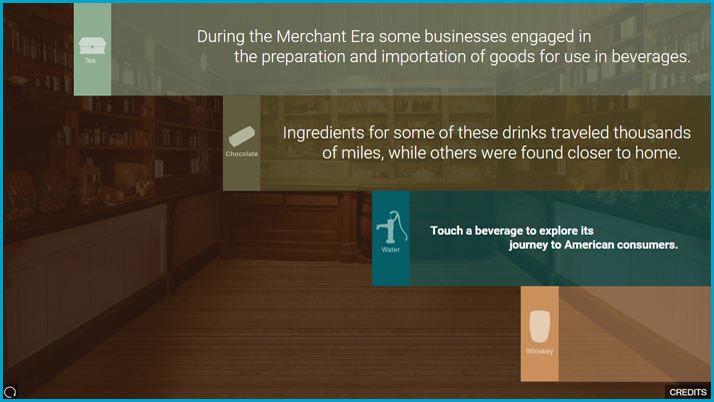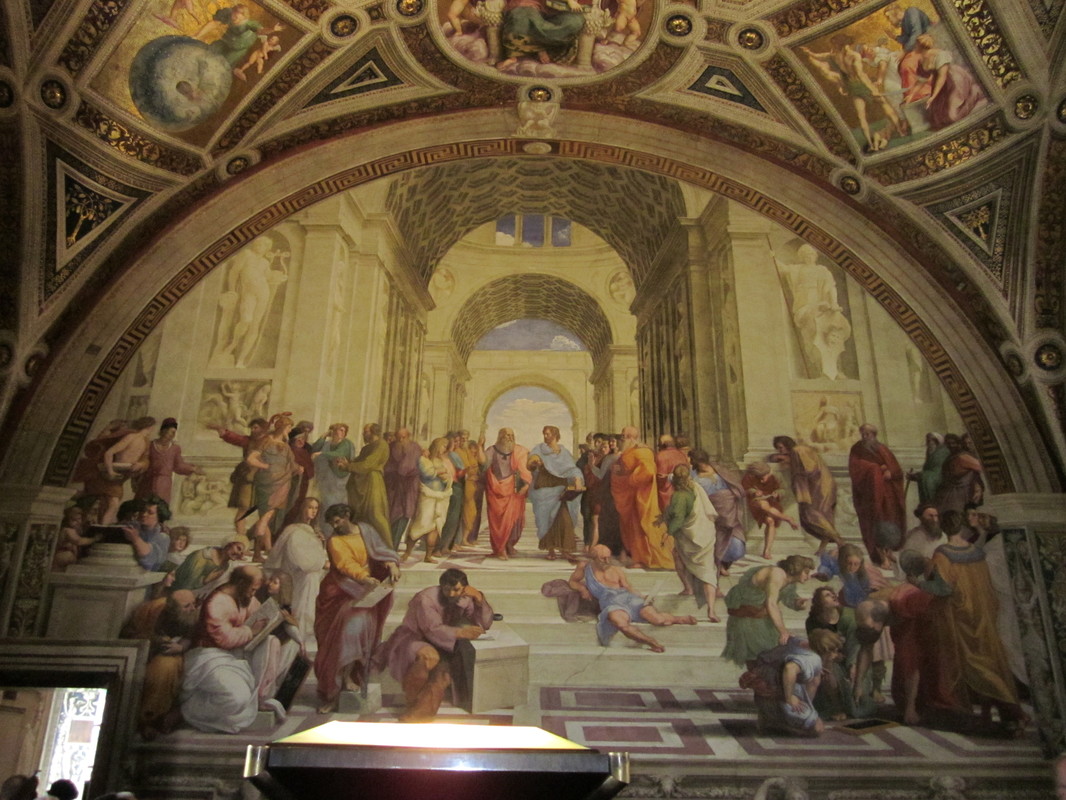|
The Smithsonian's National Museum of American History includes on its website several interactive historical "simulations" on topics ranging from agriculture to global finance. (Most are designed to be used with a touch screen device.) americanhistory.si.edu/american-enterprise-exhibition/simulations
0 Comments
This animation shows the emergence of U.S. political boundaries over time, which closely tracks settlement, from the early 1800s to 2000. i.redd.it/uatjbhm50g2z.gif
Emerging infectious diseases are a threat to both public health and security. The Emerging Infectious Disease Repository provides researchers and policymakers with information on (1) the emergence of new diseases capable of infecting humans, (2) the reappearance of diseases thought to be previously eliminated or controlled, (3) new drug resistance, (4) a disease's new or expanded geographic range, (5) increased incidence of infection, and (6) increased virulence. You can visit the EIDR site to monitor disease events by type or by geography: eidr.ecohealthalliance.org
The International Ice Patrol, created after the sinking of the Titanic to monitor icebergs in the North Atlantic, has recorded 976 icebergs off Newfoundland so far this year, more than double the average. The icebergs drift into shipping lanes (generally south of 48◦ north latitude) and pose a threat to trans-Atlantic maritime traffic. This article from The Economist notes that number of icebergs varies considerably from year to year, depending on a variety of physical geography cues, including water and air temperature, ocean currents, and wind strength. www.economist.com/blogs/economist-explains/2017/06/economist-explains-14
U.N. population forecasts suggest that by 2050 the elderly (age 65+) will outnumber children under age 14 for the first time in history. This map, from Bank of America Merrill Lynch's Transforming World Atlas, shows aging patterns by country. www.tralac.org/images/News/Reports/Transforming%20World%20Atlas%202nd%20edition%20BofAML%20March%202016.pdf (p.10)
A neurologist captures the essence of the philosophy of mind in a recent article in the science magazine Nautilus:
"Neuroscientists have long known which general areas of the brain and their connections are necessary for the state of consciousness. By observing both the effects of localized and generalized brain insults such as anoxia and anesthesia, none of us seriously doubt that consciousness arises from discrete brain mechanisms. Because these mechanisms are consistent with general biological principles, it’s likely that, with further technical advances, we will uncover how the brain generates consciousness. However, such knowledge doesn’t translate into an explanation for the what of consciousness—that state of awareness of one’s surroundings and self, the experience of one’s feelings and thoughts. ... As an intellectual challenge, there is no equal to wondering how subatomic particles, mindless cells, synapses, and neurotransmitters create the experience of red, the beauty of a sunset, the euphoria of lust, the transcendence of music, or in this case, intractable paranoia." nautil.us/issue/49/the-absurd/when-neurology-becomes-theology This topological map shows the average cost to fuel and insure a car by state: the light green states are least expensive (Illinois, Iowa, and Ohio are lowest), the red states are most expensive (Wyoming and Louisiana top the list), and the outer ring shows the ratio between fuel costs and insurance costs. howmuch.net/articles/true-cost-of-being-a-driver
Can't get away this summer? You can still dream about your next vacation and learn something new in the process: this National Geographic photo essay shares images from all 59 U.S. National Parks. www.nationalgeographic.com/travel/destinations/north-america/united-states/59-national-parks-photos
China's Yellow River carries more silt per unit of flow than any other big river in the world. But silt gums up hydroelectric dams, which is why once a year, in late June or early July, the floodgates of the Xiaolangdi Dam on the Yellow River (near the Silk Road city of Luoyang) are opened to release 30 tons of silt downstream. This photo shows people turning out to watch this dramatic annual event: i.dailymail.co.uk/i/pix/2013/07/07/article-0-1AB30330000005DC-317_964x648.jpg
After declining in the 1990s, the number of active civil wars has increased significantly since 2003. One of the factors being cited is the role of the internet in spurring, funding, and sustaining uprisings. (1) The internet is making it more difficult to suppress information. Citizens are more likely to find out about what's happening in their country and beyond. (2) The internet is making it easier to tap into money and fighters from around the world. This has also increased the number of rebel groups involved in any given conflict. (3) The internet provides a global audience, which means that rebel groups are increasingly likely to frame their objectives in global terms rather than as addressing local grievances. Civil wars with local political and economic roots are now cast as broadly sectarian (e.g., Sunni vs. Shia in Syria or Christian vs. Muslim in the Central African Republic). (4) The internet-enhanced spread of ideas and ideology is tied to a "contagion effect": once one civil war breaks out, it increases the risk that civil war will break out in neighboring countries. (5) Previously, support of the local population played a major role in the longevity of a civil war, which meant that rebel groups exhibited some restraint in dealing with the local civilian population. Outside funding and outside fighters attracted via the internet has meant longer conflicts with more violence towards civilians. www.washingtonpost.com/news/monkey-cage/wp/2017/06/08/the-internet-is-changing-civil-wars-here-are-five-trends-to-watch
The map of NATO has undergone important changes over the last 20 years with the addition of several former Communist countries. This year's recently concluded NATO exercises for the first time focused on defending the Baltic countries -- Estonia, Latvia, and Lithuania -- by preserving the narrow land corridor known as the Suwalki Gap that physically connects Lithuania and the Baltics (which became NATO members in 2004) to the rest of NATO via Poland (which became a NATO member in 1999). The complication? As this map shows, the Suwalki Gap lies between Belarus and the highly militarized Russian exclave of Kaliningrad. www.stratfor.com/sites/default/files/styles/stratfor_large__s_/public/main/images/belarus-kaliningrad.jpg
It's always been difficult, logistically and financially, to bring goods and services to sparsely populated rural areas. High-speed internet is a current case in point. This map, which appeared in The Wall Street Journal a few days ago, looks at subscriptions to broadband internet service (more green=more high-speed internet subscriptions per 1,000 people; more purple=fewer high-speed internet subscriptions per 1,000 people). pbs.twimg.com/media/DCY7hH9V0AAMyl3.jpg
Thinking about using part of your summer to expand your understanding of philosophy? These (free) online classes are starting soon:
*Moralities of Everyday Life (starts June 19): www.coursera.org/learn/moralities *Introduction to Philosophy (starts June 26): www.coursera.org/learn/philosophy *Reason and Persuasion: Thinking Through Three Dialogues of Plato (starts July 3): www.coursera.org/learn/plato-dialogues *Philosophy and the Sciences (starts July 10): www.coursera.org/learn/philosophy-cognitive-sciences This map was created by analyzing Google data on "how to spell ..." searches generated in each state and yields some amusing results. www.nytimes.com/2017/05/31/us/misspelled-words-states.html
If you're looking for a summer learning project, your family can transform your backyard (or balcony container garden or neighborhood public space) into a Certified Wildlife Habitat. The National Wildlife Federation educates individuals, families, student groups, civic groups, and others on how to make an outdoor space pollinator/bird/wildlife friendly and allows you to certify your efforts. www.nwf.org/Garden-For-Wildlife/Certify.aspx
When compared with its EU neighbors, the UK is a country of economic extremes, containing both the richest region in northern/western Europe (inner London) as well as nine of the 10 poorest regions (with Wales, Cornwall, and Durham -- all former coal-mining areas -- leading the list). static.independent.co.uk/s3fs-public/styles/story_medium/public/indy100/eJ0axHCqmx/18477-6rv6cn.jpg It is worth noting that the frame of reference for this map is (a) the UK's neighbors in northwestern Europe (which is why poorer EU countries such as Spain, Greece, Poland, et al. are not included in this analysis) and (b) EU countries (which is why Norway and Switzerland, for example, are not included on the map).
Leadership choices are a leading cause of food insecurity. At present, four countries -- Yemen, Nigeria, Somalia, and South Sudan -- are experiencing acute food emergencies and/or famines. In each case, leadership choices, in those countries and elsewhere, have played a major role in the current food crises. This analysis by Reuters looks at major famines since 1950 and finds government policies and conflict, not just weather, to be the primary causes of famine-related deaths. http://www.reuters.com/article/us-datadive-famine-idUSKBN18M1FQ
U.S. trees are on the move. Between 1980 and 2015, several tree species associated with America's eastern woodlands -- including white oaks, hollies, and sugar maples -- have shifted their range, often westward (in the case of deciduous trees) or northward (in the case of coniferous trees).Scientists are still trying to figure out why, exactly, this has happened, but it seems to be linked to changes in physical geography, including historic rainfall patterns and temperatures. www.theatlantic.com/science/archive/2017/05/go-west-my-sap/526899/
Given last week's decision by Saudi Arabia and some of its allies to cut off ties with the nearby island nation of Qatar, this map, showing the presence of U.S. military forces in the Middle East, becomes rather interesting. www.statista.com/chart/9727/where-us-troops-are-based-in-the-middle-east/
A recent article in MIT Technology Review posits that new advances in machine learning -- which involve machines teaching themselves and not simply being programmed by humans -- mean that one day soon we, as humans, may never know why machines make the decisions they do. On what basis did a machine trained via "deep learning" choose to stop at an unregulated intersection or sell a stock holding or make a particular diagnosis or identify a missile target or even put a news story in your queue? Do we have a right to know? (The EU is drafting legislation that says EU citizens do.) Or is knowing something we are willing to give up to achieve more speed and accuracy in decision making? www.technologyreview.com/s/604087/the-dark-secret-at-the-heart-of-ai/
Ramadan, the Islamic holy month that involves, for the religiously observant, no eating or drinking of anything between sunrise and sunset, relies on a lunar calendar which, in effect, brings it a little earlier every year. This year, Ramadan began roughly two weeks ago, and last night's full moon marked the halfway point for 2017. This graph from The Economist considers how difficult it might be to observe Ramadan in various cities around the world this year. In Helsinki, for example, the 19+ hours of daylight this time of year means a very long daily fast. Whereas in Mecca, where the average daily high this time of year is 35 Celsius (95 Fahrenheit), dehydration is a bigger challenge. www.economist.com/blogs/graphicdetail/2017/05/daily-chart-19?fsrc=scn/fb/te/bl/ed/
Performances begin at Wolf Trap's Children's Theatre-in-the-Woods on June 20 and run almost daily through early August. Wolf Trap is the only U.S. national park dedicated to the performing arts, and the Children's Theatre-in-the-Woods presents hour-long, mid-day performances -- dance, music, puppetry, drama -- for children from nursery school through middle school. For the schedule, see www.wolftrap.org/tickets/ctitw.aspx
At present, the U.S. population stands at a bit more than 320 million. This map shows other regions of the world with roughly equivalent populations and, if you check out the key to the left of the map, the largest city within each of those regions. https://moverdb.com/united-states-population-world/
If you'd like to use part of your summer to enrich your understanding of international affairs, here's the summer reading list put together by the faculty at George Washington University's Elliott School of International Affairs: elliott.gwu.edu/faculty-summer-reading-list-2017 From brand-new books to classics, this list considers global issues and leadership choices through the prisms of history, geography, politics, economics, political science, fiction, and biography.
This article from earlier this year helps explain why China is holding to its commitments to combat sea level rise. The article includes an interesting feature that maps development in the Pearl River Delta from 1988 to the present. "Guangzhou, formerly Canton, had more than a million people [a generation ago], but by the 1980s, China set out to transform the whole region, capitalizing on its proximity to water, the energy of its people, and the money and port infrastructure of neighboring Hong Kong. Rushing to catch up after decades of stagnation, China built a gargantuan collection of cities the size of nations with barely a pause to consider their toll on the environment, much less the future impact of global warming. Today, the region is a goliath of industry with a population exceeding 42 million. But while prosperity reshaped the social and cultural geography of the delta, it didn’t fundamentally alter the topography. Here, as elsewhere, breakneck development comes up against the growing threat of climate change. Economically, Guangzhou now has more to lose from climate change than any other city on the planet, according to a World Bank report. Nearby Shenzhen, another booming metropolis, ranked 10th on that World Bank list, which measured risk as a percentage of gross domestic product." www.nytimes.com/interactive/2017/04/07/world/asia/climate-change-china.html
|
Blog sharing news about geography, philosophy, world affairs, and outside-the-box learning
Archives
December 2023
Categories
All
|



 RSS Feed
RSS Feed